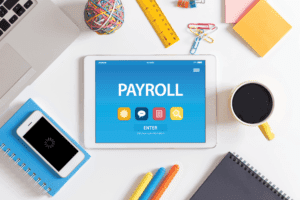
The best way to understand accounts receivable is to view a transaction and how it ends up on the balance sheet. Starting from Year 0, the accounts receivable balance grew from $50 million to $94 million in Year 5, as captured in our roll-forward. The difference between accounts receivable and accounts payable is as follows. Note, the ending accounts receivable balance can be used, rather than the average balance, assuming the historical trend is consistent with minimal fluctuations. One way to get people to pay you sooner is to make it worth their while.
Save money with car insurance and credit card tips!
By submitting this form, you consent to receive email from Wall Street Prep and agree to our terms of use and privacy policy. Therefore, the supplier sent the customer, i.e. the manufacturer, an invoice for the amount owed, which we’ll assume to be $50k. Suppose an electronic components supplier received an order from a manufacturer. The manufacturer placed an order and the requested components were delivered based on the purchase agreement. Or, in a much simpler approach, rely on the average if there appears to be no significant shifts (i.e. only minor fluctuations). retained earnings Follow the journey of one of history’s most influential figures in accounting, Luca Pacioli, the father of accounting.
Ratio #13 Days’ Sales in Inventory (Days to Sell)
- If you do business long enough, you’ll eventually come across clients who pay late, or not at all.
- If you had non-public internal books, you could reconcile the figures (presuming they are accurate).
- On top of that, accounts receivable also meet the definition for assets set by accounting standards.
- As you suspect – not all of the necessary information is available in Consolidated Balance Sheet of the parent company.
- For each business day that passes, a certain amount of fees become earned and non-refundable.
- It hence made doubtful accounts provisions of $16mn for its $86,833mn (0.018%) of 2014 sales and wrote off $51mn of its carrying balance during the year.
You would think that every company wants a flood of future cash coming its way, but that is not the case. Money in A/R is money that’s not in the bank, and it can expose the company to a degree of risk. If Walmart were to go bankrupt or simply not pay, the seller would be forced to write off the A/R balance on its balance sheet by $1.5 million.
- Your general ledger will show your total accounts receivable balance, but to dig into outstanding payments by individual customers, you’ll usually need to refer to the accounts receivable subsidiary ledger.
- However, some items related to the accounts receivable balances may become a part of the income statement.
- First, it can include irrecoverable balances that companies must write off to present an accurate amount.
- BWW estimates 15% of its overall accounts receivable will result in bad debt.
- It reflects the money owed to a company from the sale of its goods or services that remains to be paid by the buyer.
Offer a financial incentive
The journal entry for the Bad Debt Expense increases (debit) the expense’s balance, and the Allowance for Doubtful Accounts increases (credit) the balance in the Allowance. The allowance https://x.com/bookstimeinc for doubtful accounts is a contra asset account and is subtracted from Accounts Receivable to determine the Net Realizable Value of the Accounts Receivable account on the balance sheet. In the case of the allowance for doubtful accounts, it is a contra account that is used to reduce the Controlling account, Accounts Receivable. Accounts receivable, sometimes shortened to “receivables” or “A/R,” is money owed to a company by its customers. If a company has delivered products or services but not yet received payment, it’s an account receivable. While the revenue has technically been earned under accrual accounting, the customers have delayed paying in cash, so the amount sits as accounts receivables on the balance sheet.

The assumptions are extended (i.e. “straight-lined”) across the entire forecast, until a revenue balance of $350 million is which accounts are found on an income statement reached by the end of Year 5. For example, let’s say that after a few months of waiting, calling him on his cellphone, and talking to his family members, it becomes clear that Keith has disappeared and isn’t going to pay that $500 invoice you sent him. In the rapidly evolving field of artificial intelligence and machine learning, data labeling has become a big part of training models to make accurate predictions. For example, if two companies trade goods or services, they may owe each other simultaneously, leading to both AP and AR entries. For the past 52 years, Harold Averkamp (CPA, MBA) hasworked as an accounting supervisor, manager, consultant, university instructor, and innovator in teaching accounting online.

Tips For Effective Accounts Payable And Receivable Management

In both these cases, the accounts receivable can impact the income statement. The speed at which a company is able to convert its accounts receivable and inventory into cash is crucial for the company to meet its payroll, pay its suppliers, and pay other current liabilities when the amounts are due. In other words, a company could have a huge amount of working capital and an impressive current ratio, but it requires that the current assets be converted to cash to pay the bills. This is different from the last journal entry, where bad debt was estimated at $58,097. That journal entry assumed a zero balance in Allowance for Doubtful Accounts from the prior period. This journal entry takes into account a debit balance of $20,000 and adds the prior period’s balance to the estimated balance of $58,097 in the current period.
